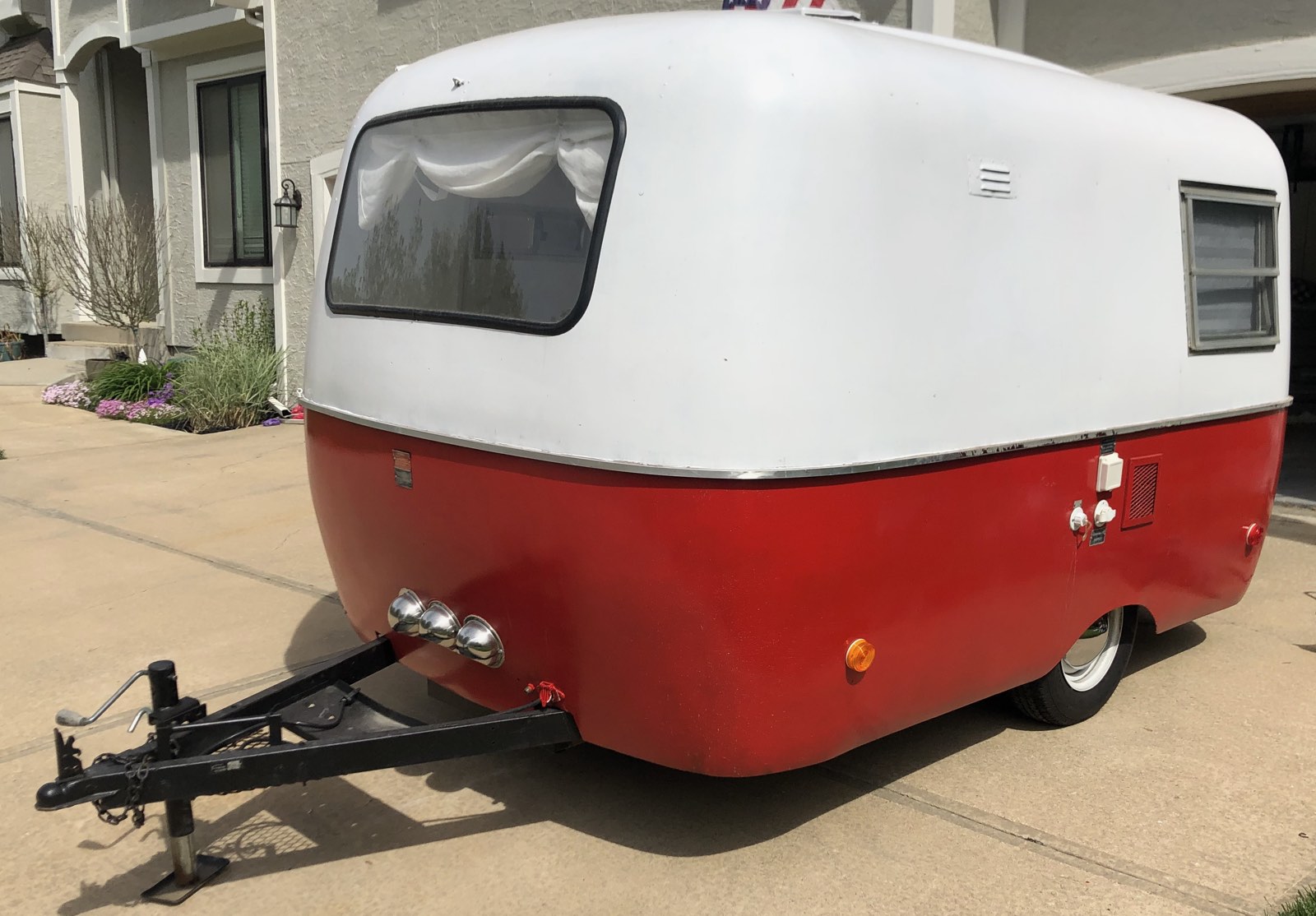
1971 Eco camper restoration#
In 2019 I became convinced that we should have a camper. And not just any camper, we should have a fiberglass "egg" camper. Through a highly improbable coincidence, it turned out a friend had one and he was willing to sell it to me for "friend price." And so I lugged this little thing home. The pictures and story here are incomplete and fractured because I'm recreating the restoration story from whatever files I can find, but I'll recreate it as best as I can.
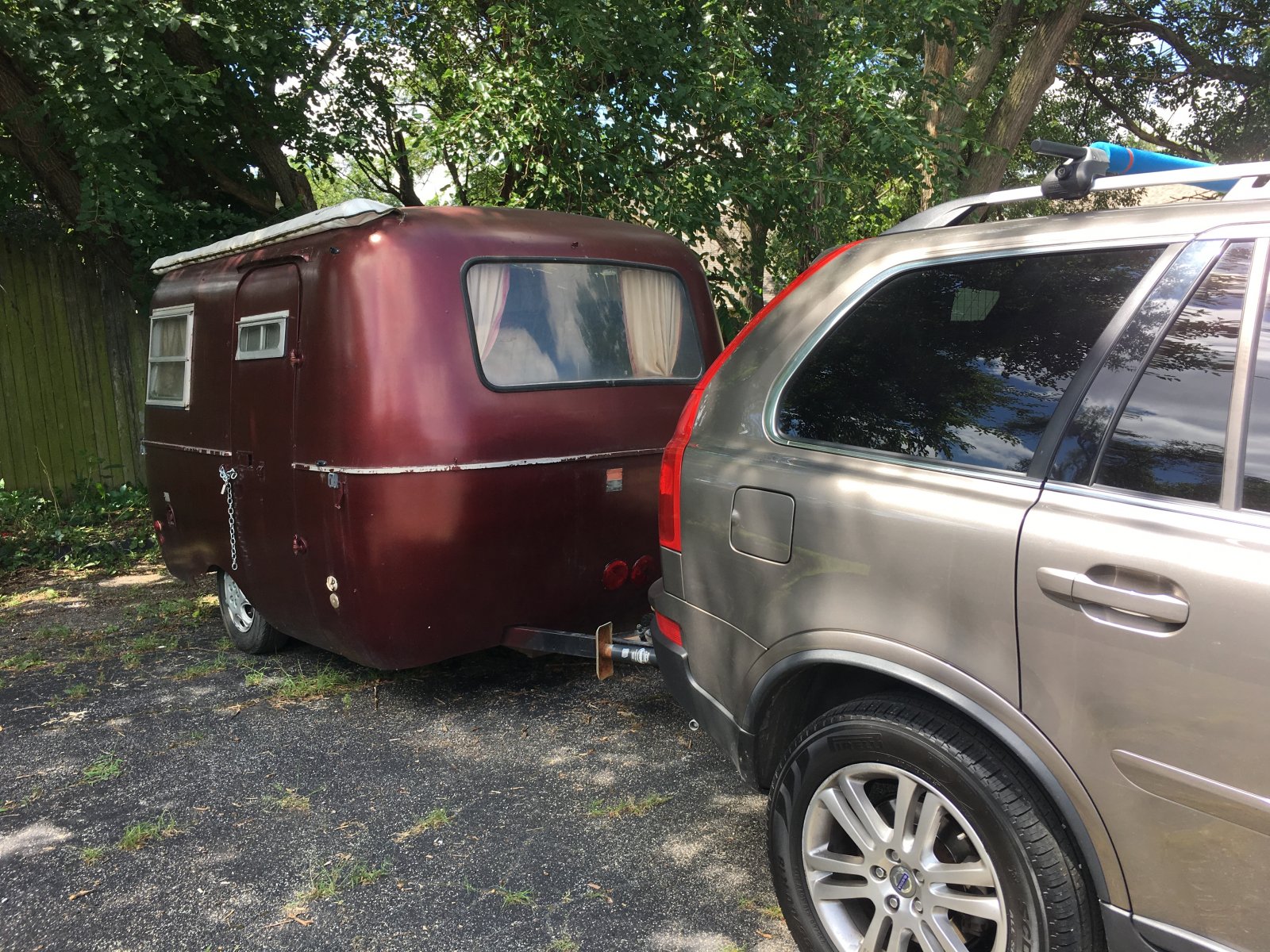

As an Amazon Associate I earn from qualifying purchases. In other words, I get commissions for purchases made through links in this post. When you follow a link and buy something, it doesn't cost you anything extra, but I may make buck or two. So thank you! That said, any recommendations I make are my recommendations, based on my experience, and are not paid endorsements. I only point you toward the stuff I use, and if I don't like it, you'll hear about why.
So what is this thing, anyway?#
In the '60s a company called Boler pioneered these little fiberglass "egg" campers. Where most campers at the time nailed aluminum into a wooden structure to make the camper (or in the case of Airstream, an aluminum frame) these were different: there was no framework for the body, because the fiberglass is self-supporting. So they're extraordinarily lightweight, easy to tow, and much less likely to break, leak or just fall apart.
Through a complicated series of events I won't get into here, Boler's original fiberglass molds ended up in the hands of a bunch of different manufacturers, including this Eco, which was built in Nebraska in 1971. I'm told the factory later specialized in fiberglass prosthesis when they got out of trailer-building.
Anyways, the original Boler design continues on today under the Scamp name. Pretty amazing longevity, but great design endures. If you're interested, there's a lot of history about them out there.
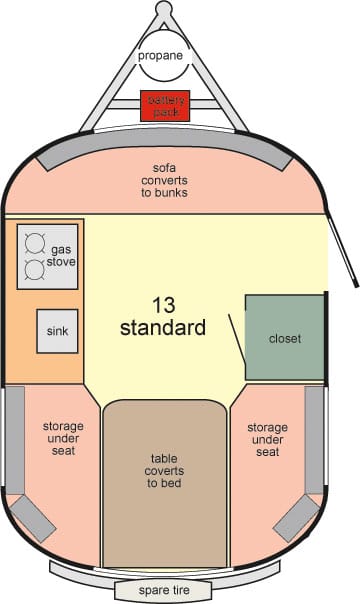
The teardown#
I was lucky it was such a great design and couldn't rot. At least I didn't have to worry much about the body. But everything inside sure could rot. And had.
When I brought it home, my wife would not step foot in it. To her credit, it really was pretty disgusting. There was carpet in it that had seem some terrible things and a smell that could stop traffic.

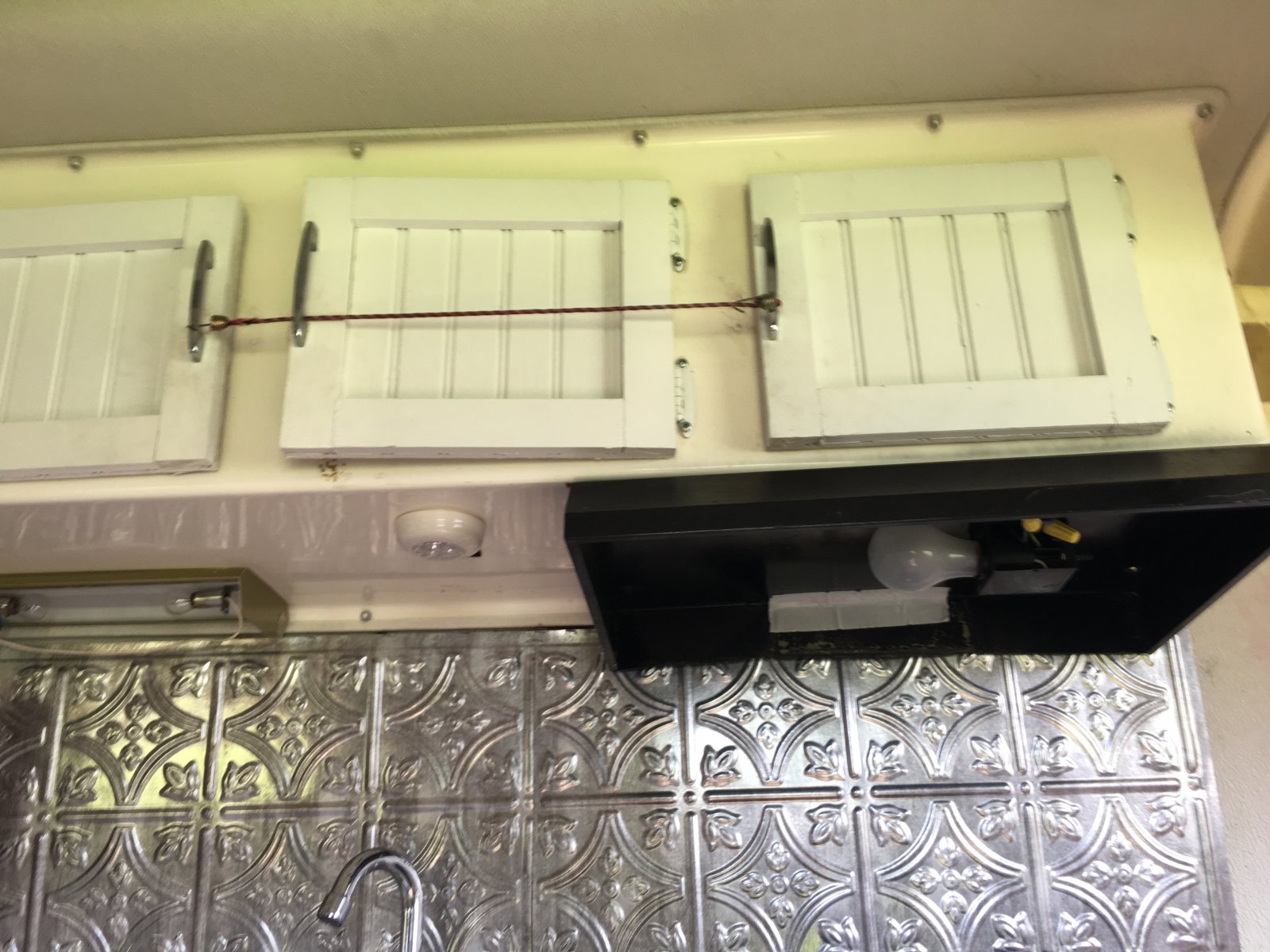


The very first thing I did was remove every fibrous surface from inside and put it all in the trash. All the cushions, the drapes, everything. If it was porous, it got yanked out and thrown out. I also found some other things I'd rather forget about, like the ancient camping toilet. Ugh.

Everything that was left was bleached, then gone over with a trisodium phosphate (TSP) cleaning solution, and then painted over with a couple of coats of Killz. There was a lot of mold, a pretty good ant infestation, and a couple of dead rodents.

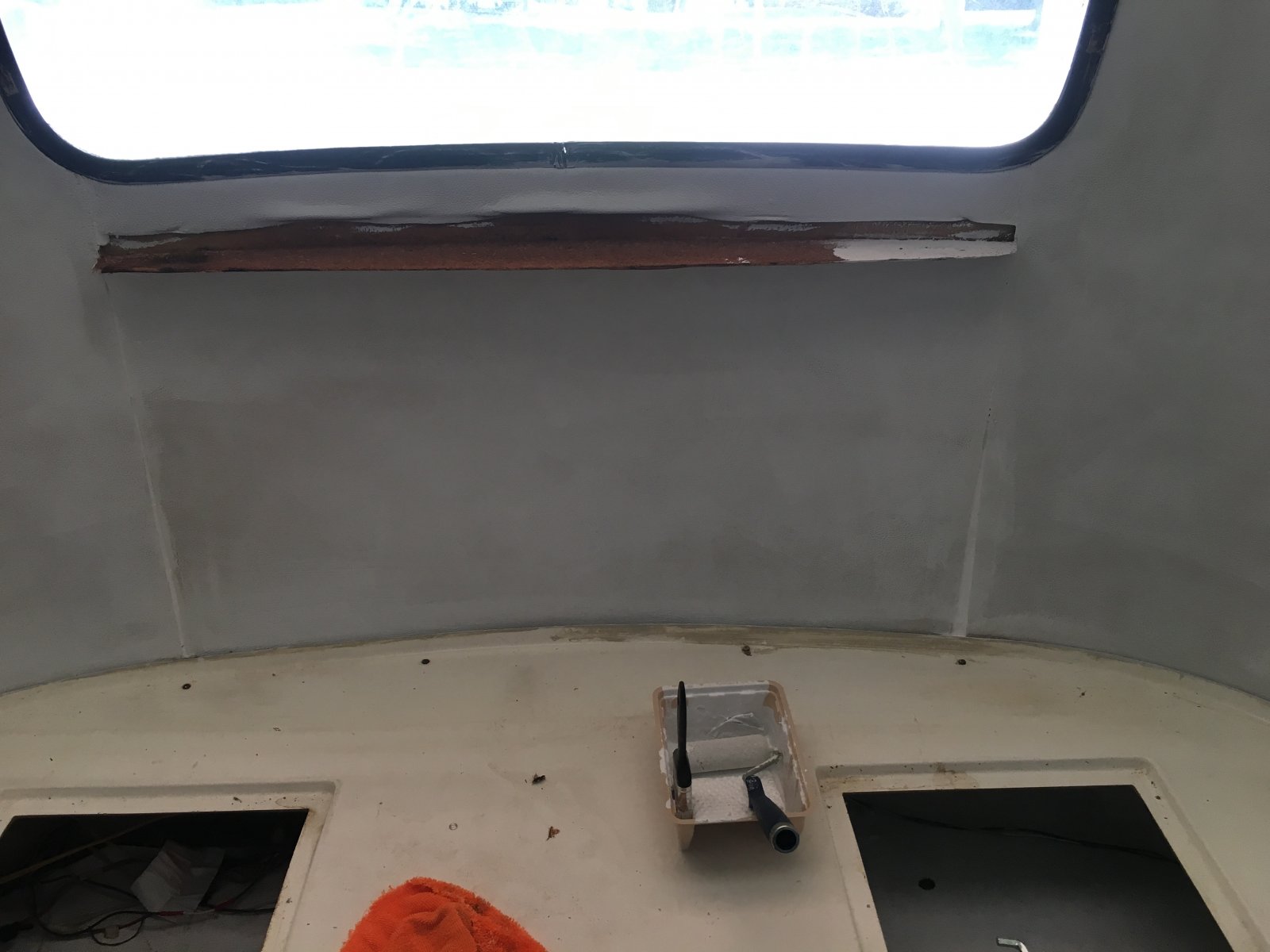

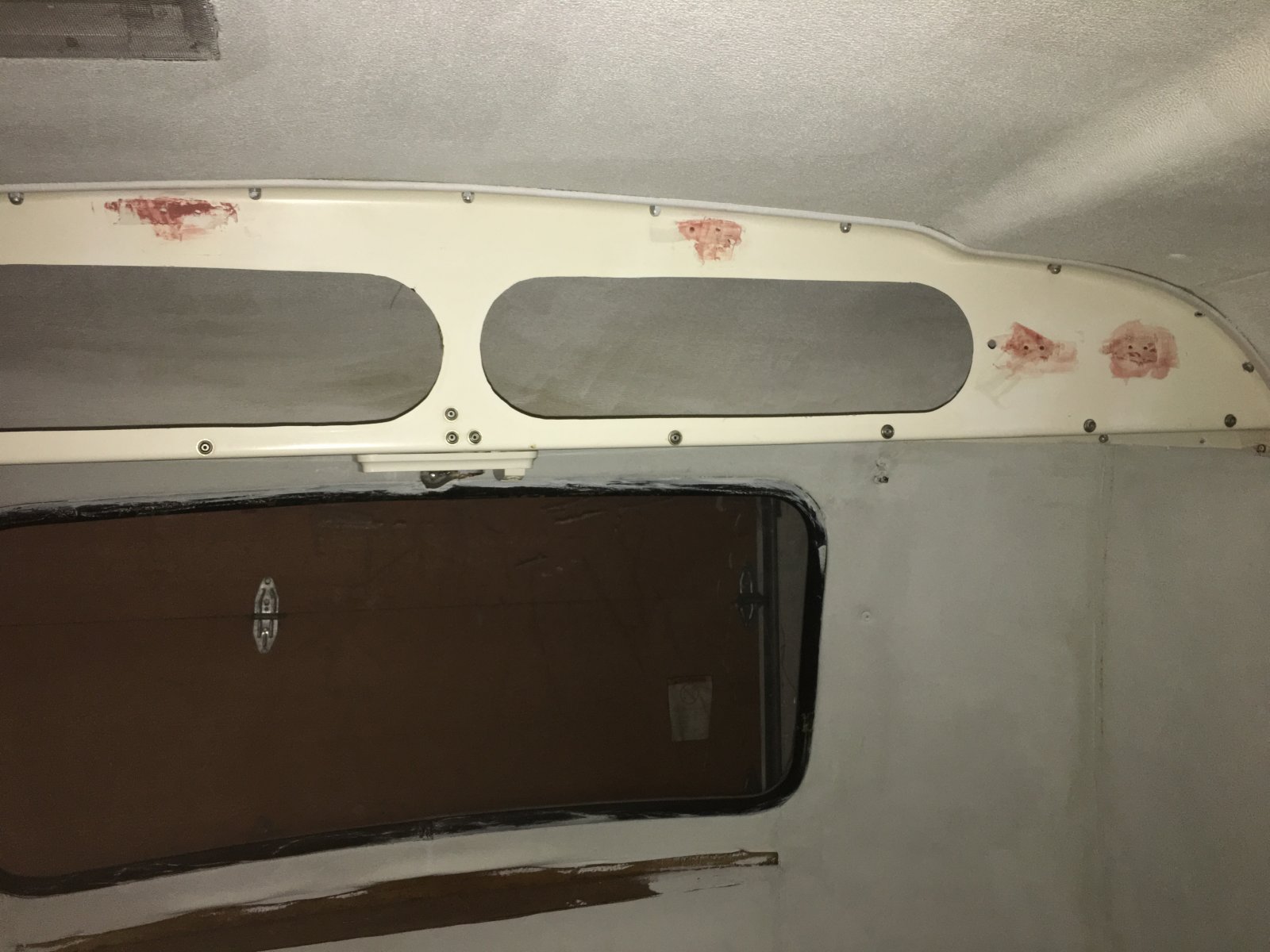

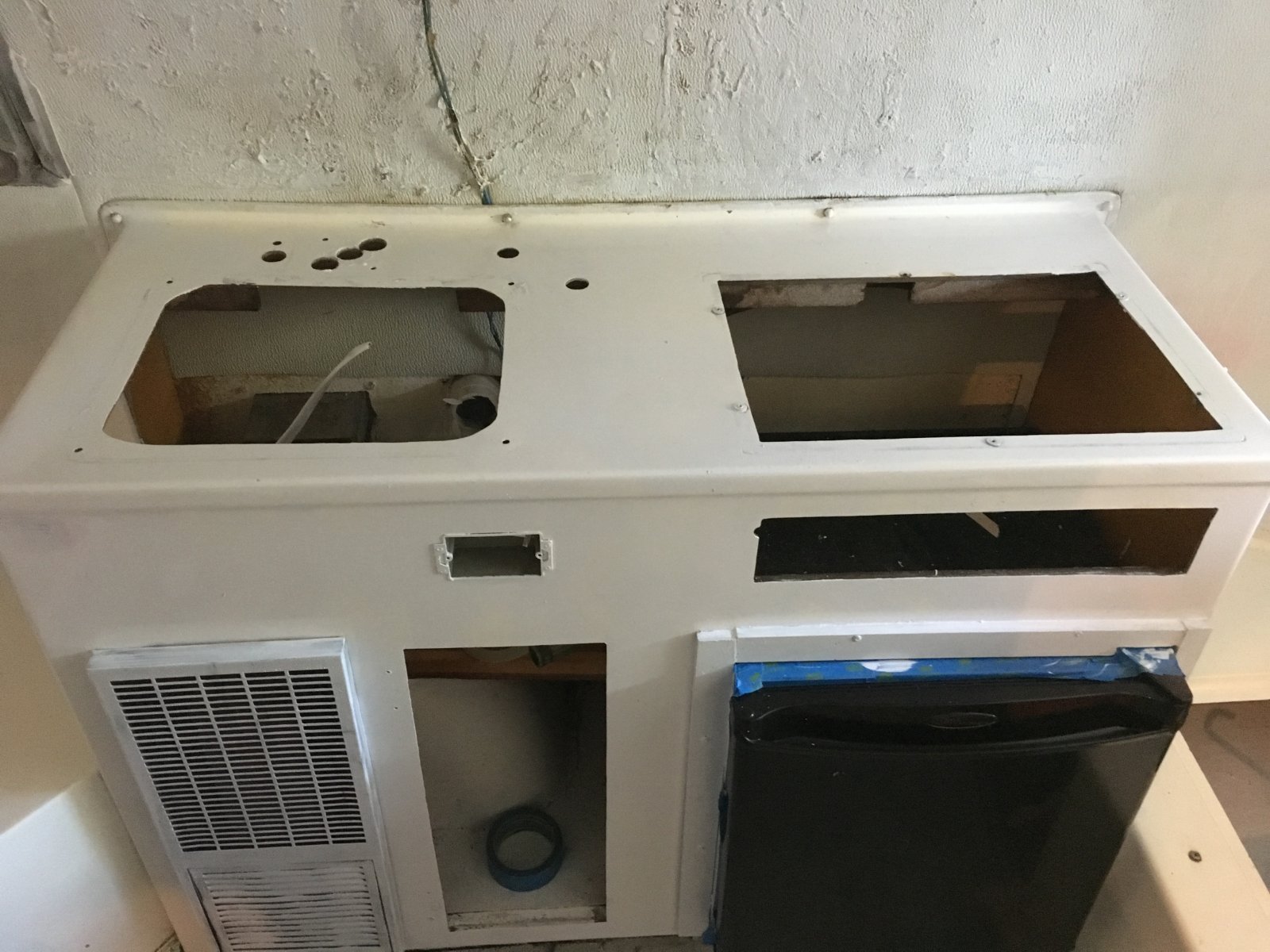
Troubleshooting power issues#
Having a usable electrical system in the trailer was quite a journey. When I first bought the trailer, I plugged it into 110V household power and got... nothing. As I investigated more, I learned two things:
- The original power center for it had long ago been gutted, with the original transformer removed and a nonsensical bit of splicing put in its place. Electricity was going places, but not the places you'd want it to go, and definitely not in the right wires.
- That length of household wiring laying out on the trailer tongue, going nowhere? It was hooked up directly to the 110V shore power. So it's probably good that I didn't touch it.
Seriously, the more I dug in, the more it was clear the existing wiring was just flat dangerous. Major work was going to be needed.

So after some research I placed an order for a Progressive Dynamics 4145 Power Center. It's compact, full-featured and packs more than enough potential power for my little trailer.
Before I could do anything to install the new power center I had to drill out the rivets holding the old power center in place, then significantly enlarge the height of the hole for the new power center. A few minutes with a drill to mark the corners and a jigsaw to cut through the fiberglass and that was done. Note: Be sure your eyes, skin and mouth are well-covered. Fiberglass is nasty stuff.
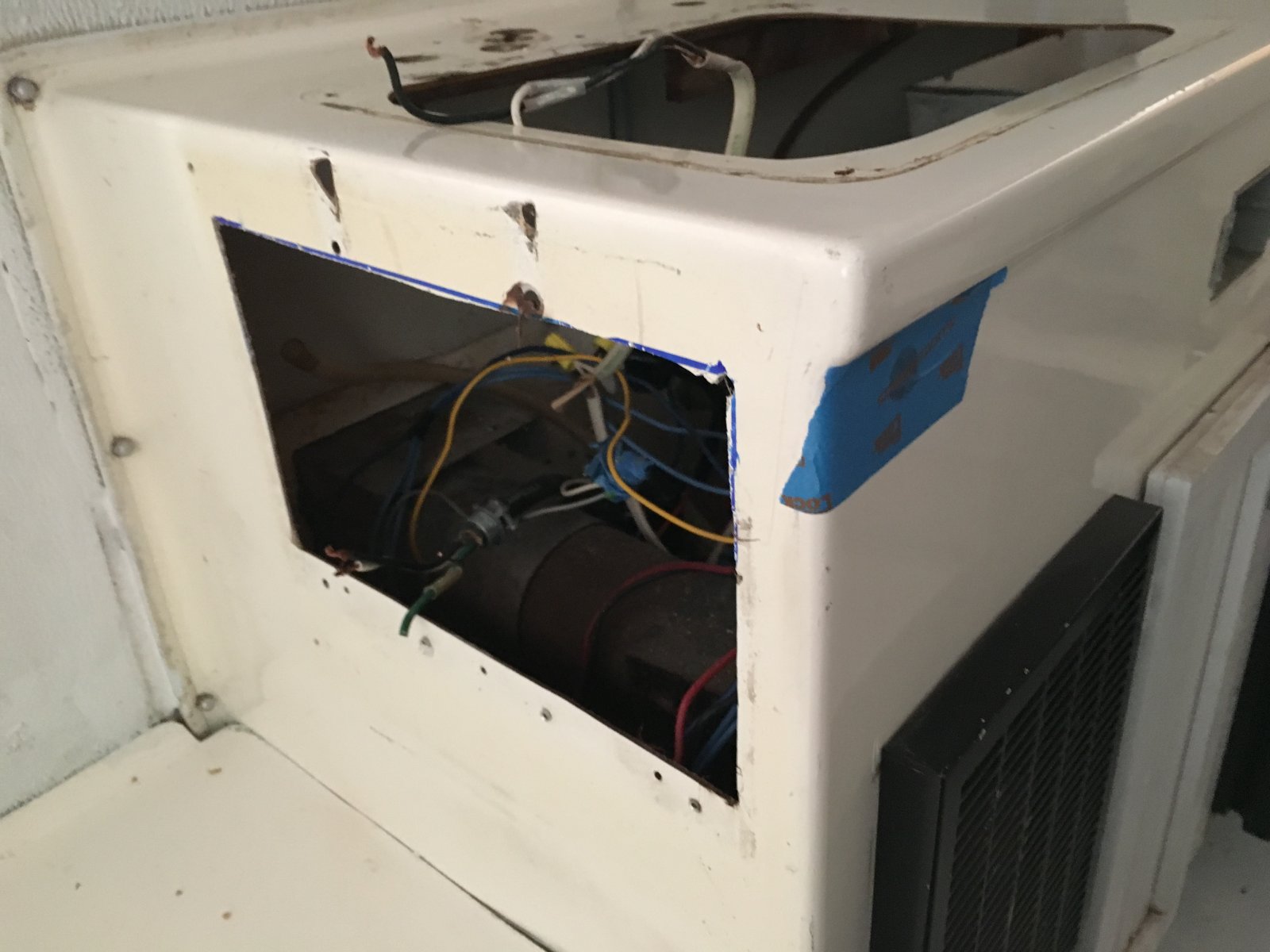
But my newly cut hole was about 1/8" too wide because of the width of the old power center. So I had to turn right around and put some trim around the new hole to keep my new height while narrowing the opening a smidge.
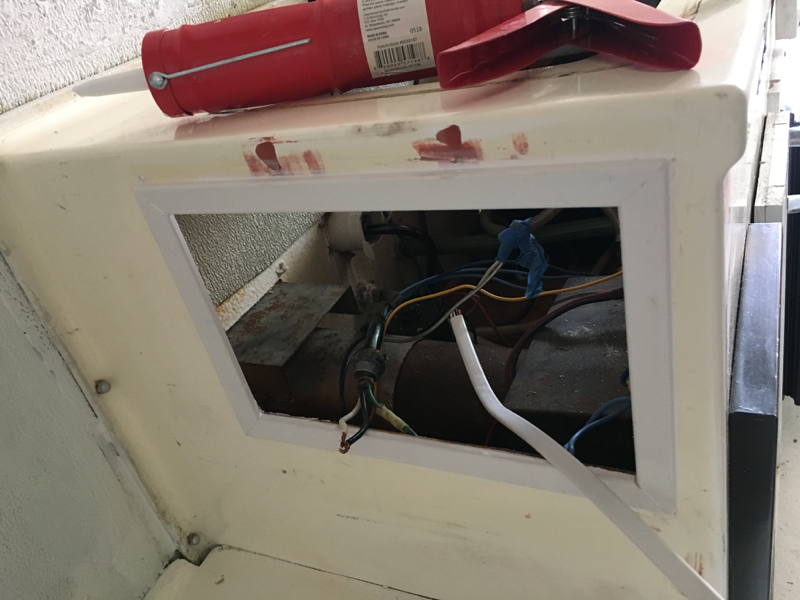
With the hole trimmed out and painted, I still had to figure out how to wire it up, which was pretty tricky and figuring out a good ground on a fiberglass trailer takes some head scratching. The Progressive Dynamics instructions were a little inscrutable, too, but with a little thought and a lot of googling, it went in.
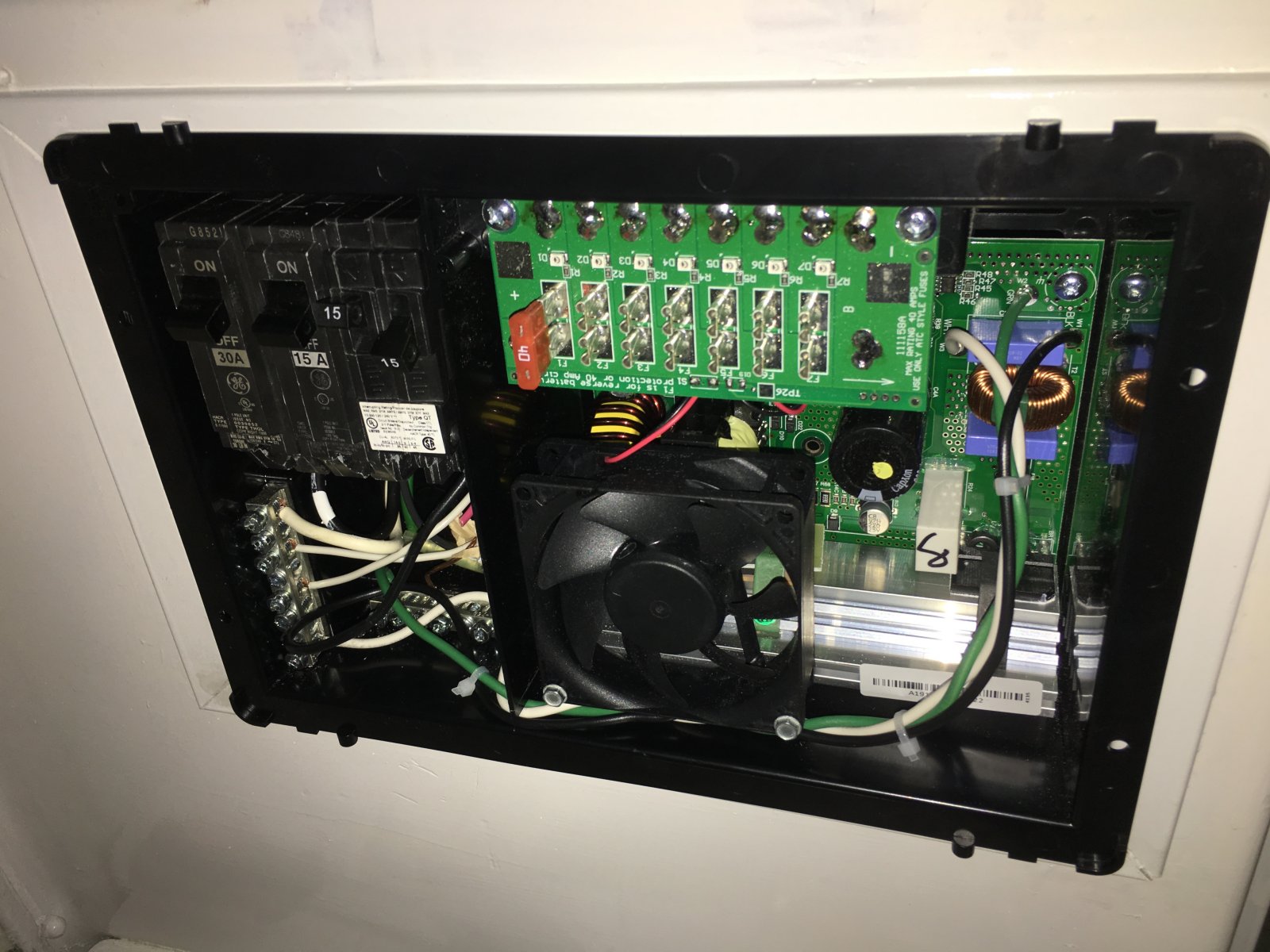
On the 110 (household) voltage side, I've got one breaker dedicated to feeding the 12v converter, one dedicated solely to the air conditioner, one dedicated to the refrigerator, and one dedicated to a 110v outlet on the front of the kitchenette cabinet. I could have put more on the circuits, but why? I don't need to, and this way there's less chance of a tripped breaker.
On the 12v side, the 4135 offers more circuits than I've yet found a use for, but the first thing I wanted to do was get some light. I found these super-low profile remote control LED puck lights on Amazon and went ahead and ordered them. It'd be nice not doing everything by shop light. I the wall-wart off the puck lights, mounted two in the front, two in the rear, and two over the kitchenette, then wired them up to the 12v supply. Success!
I was pretty proud when I wired it all up and it worked with no extra smoke the first time I flipped the switch.

Once it was the inside was more-or-less safe for humans to be in there, I hitched it up to take to a local trailer shop for inspection. I needed them to tell me that the frame was solid and straight, and remove this weird rack thing that had been added in the rear.

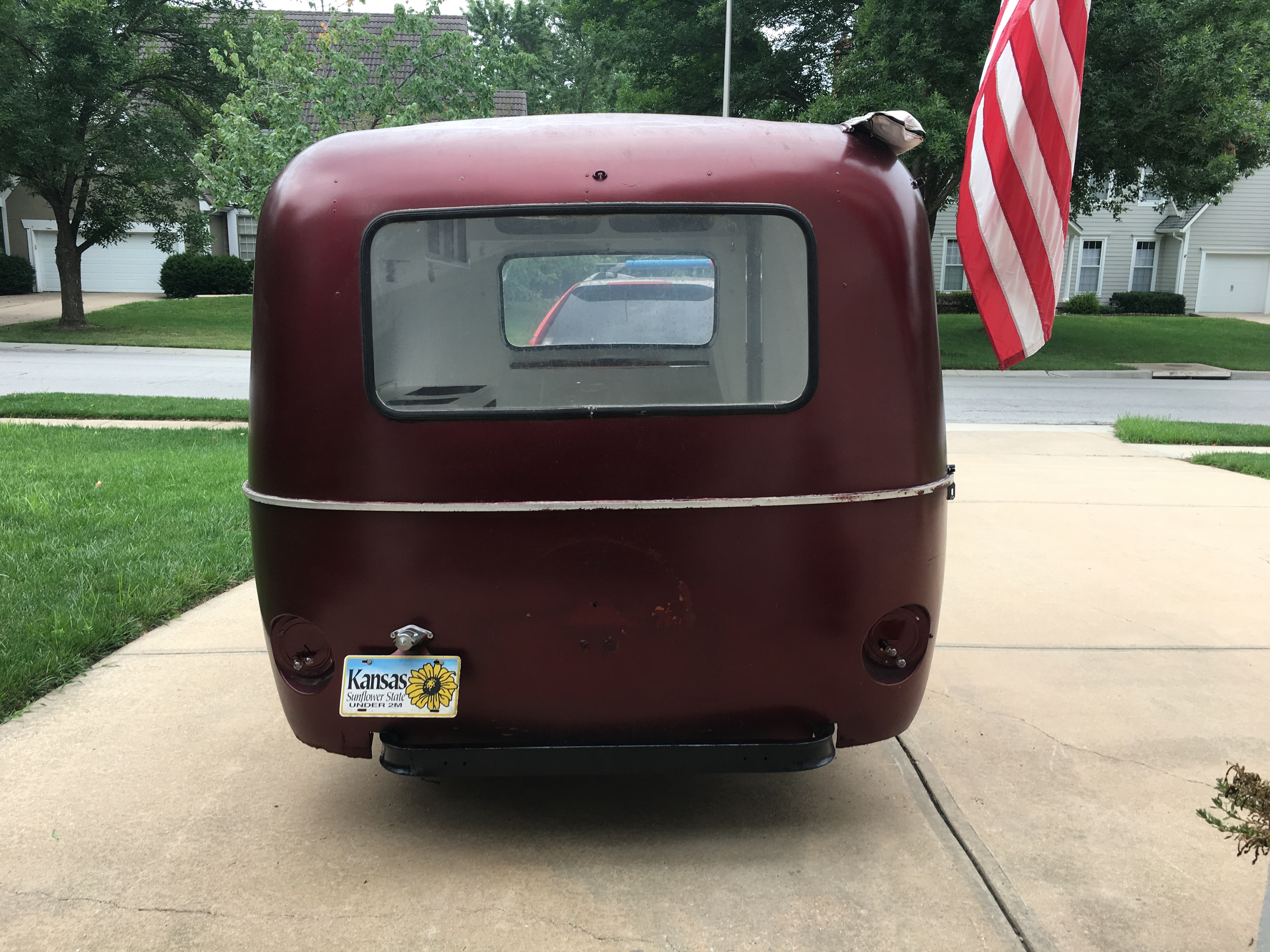

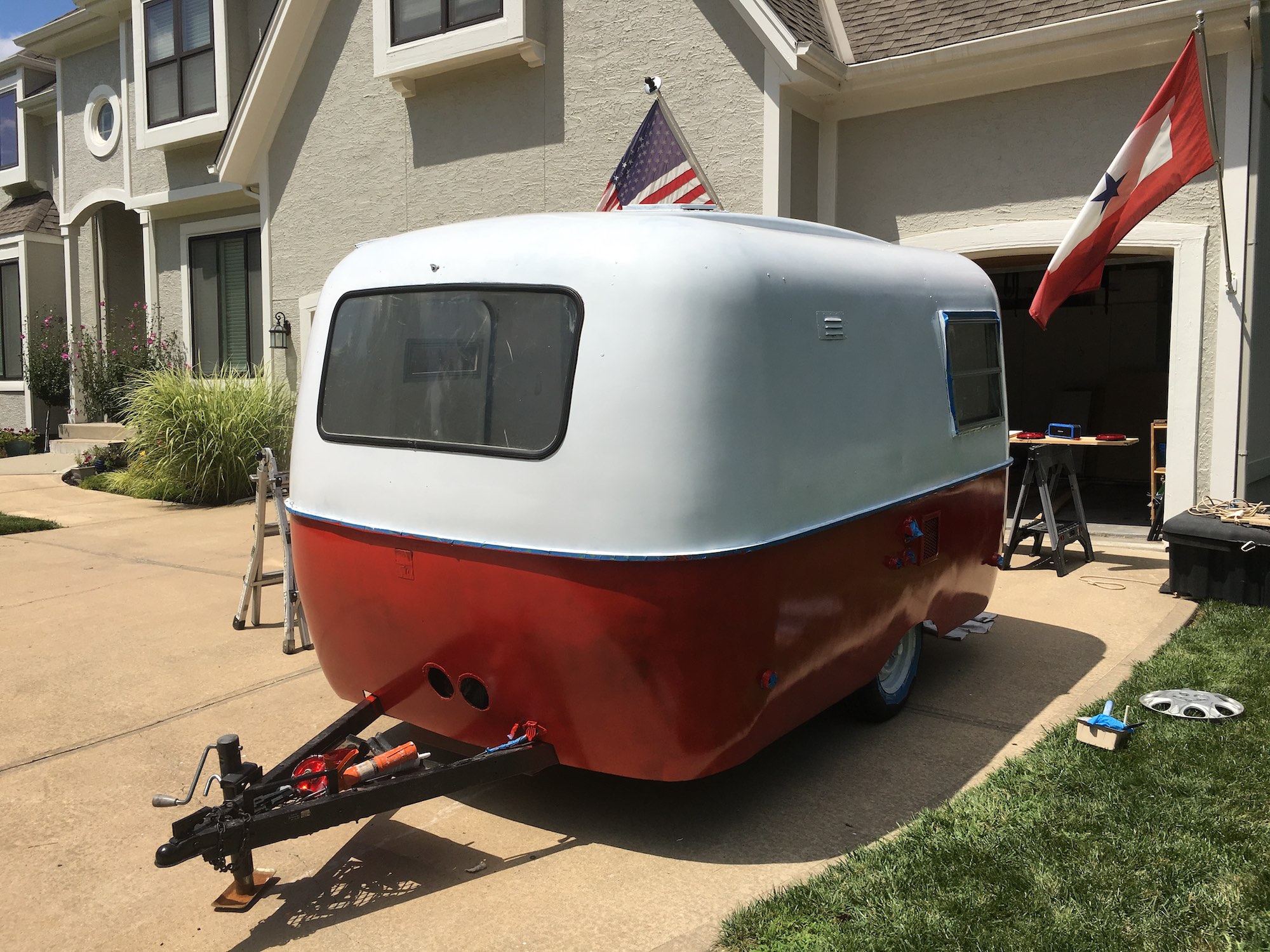




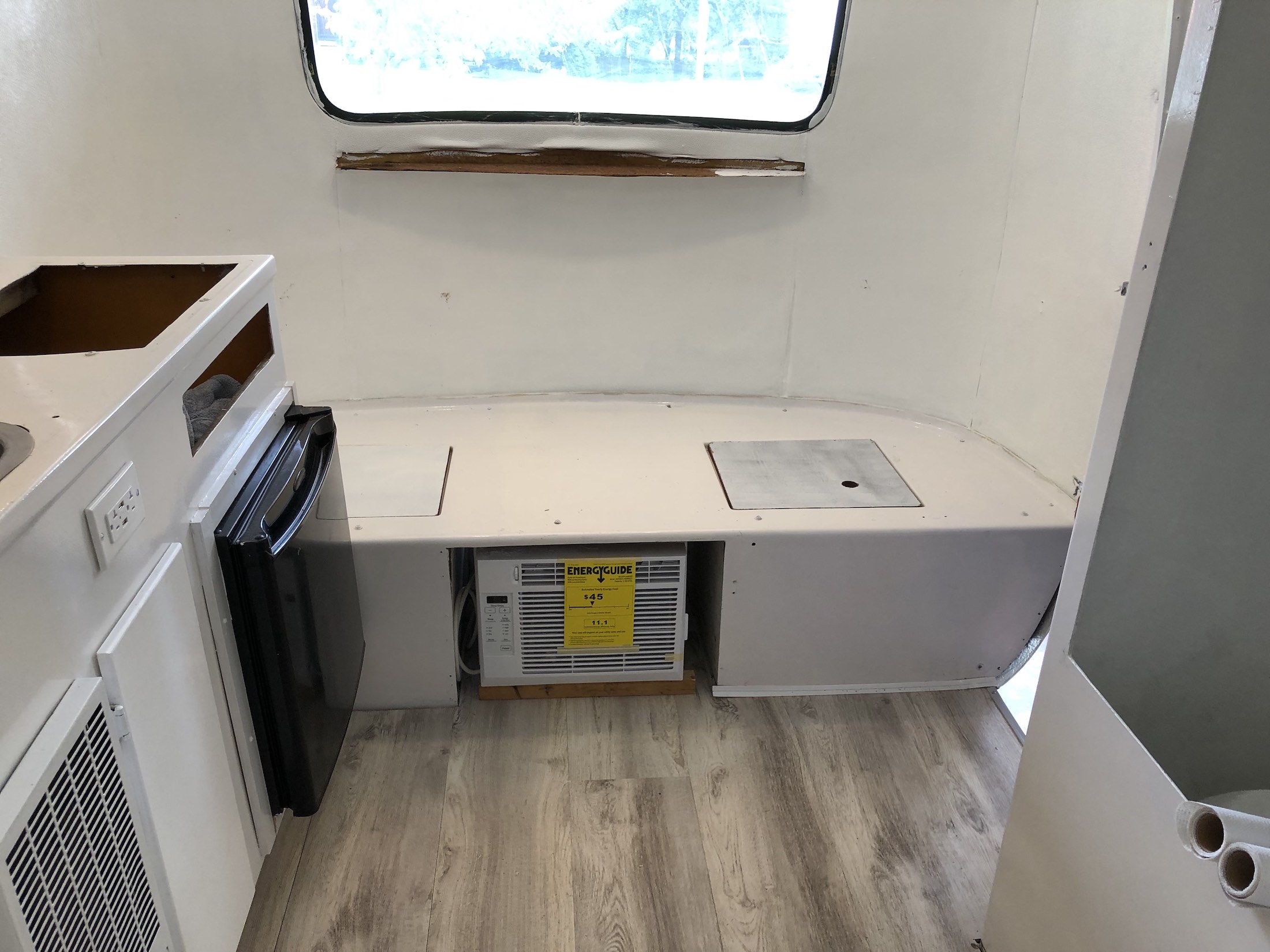
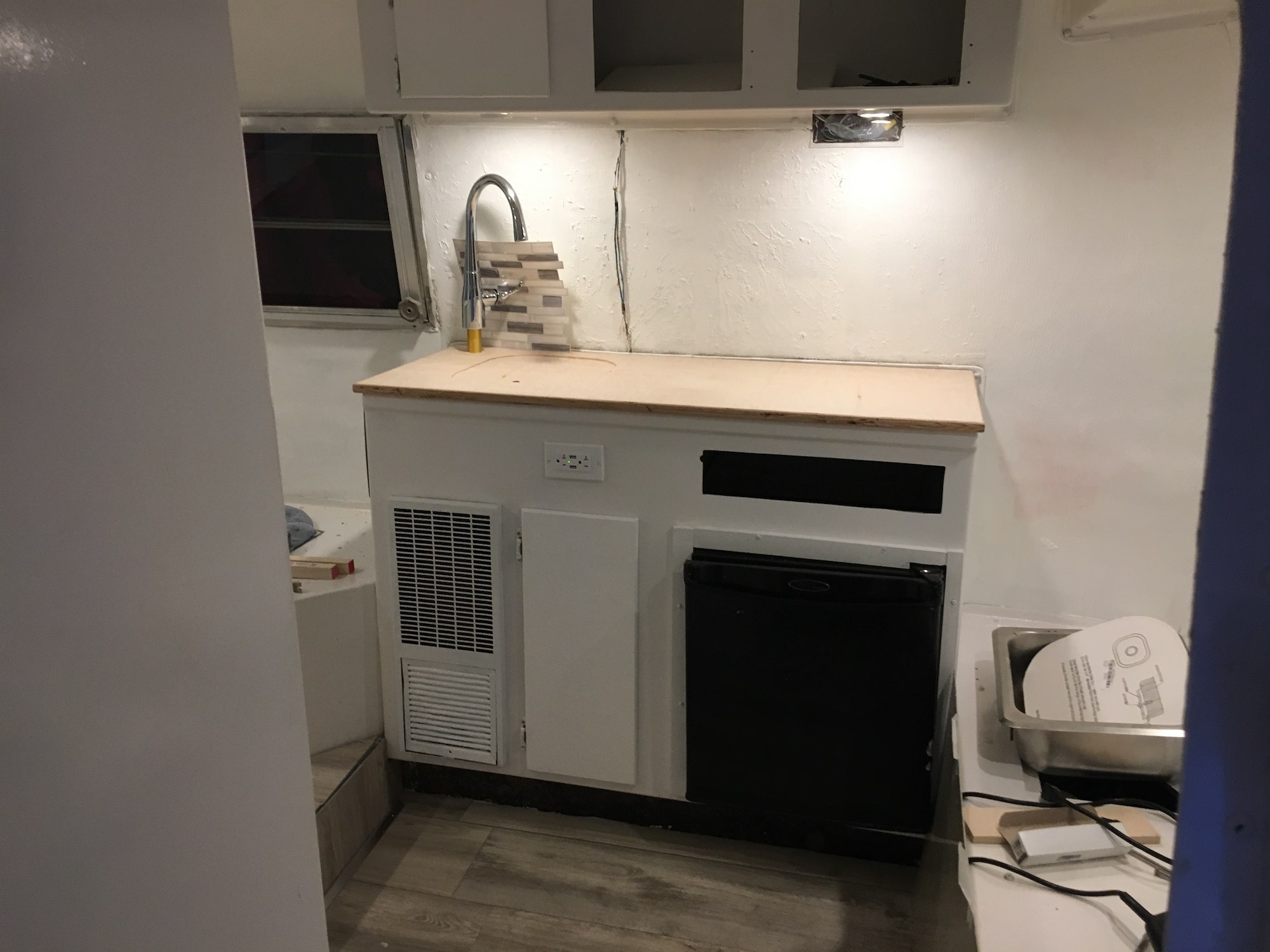


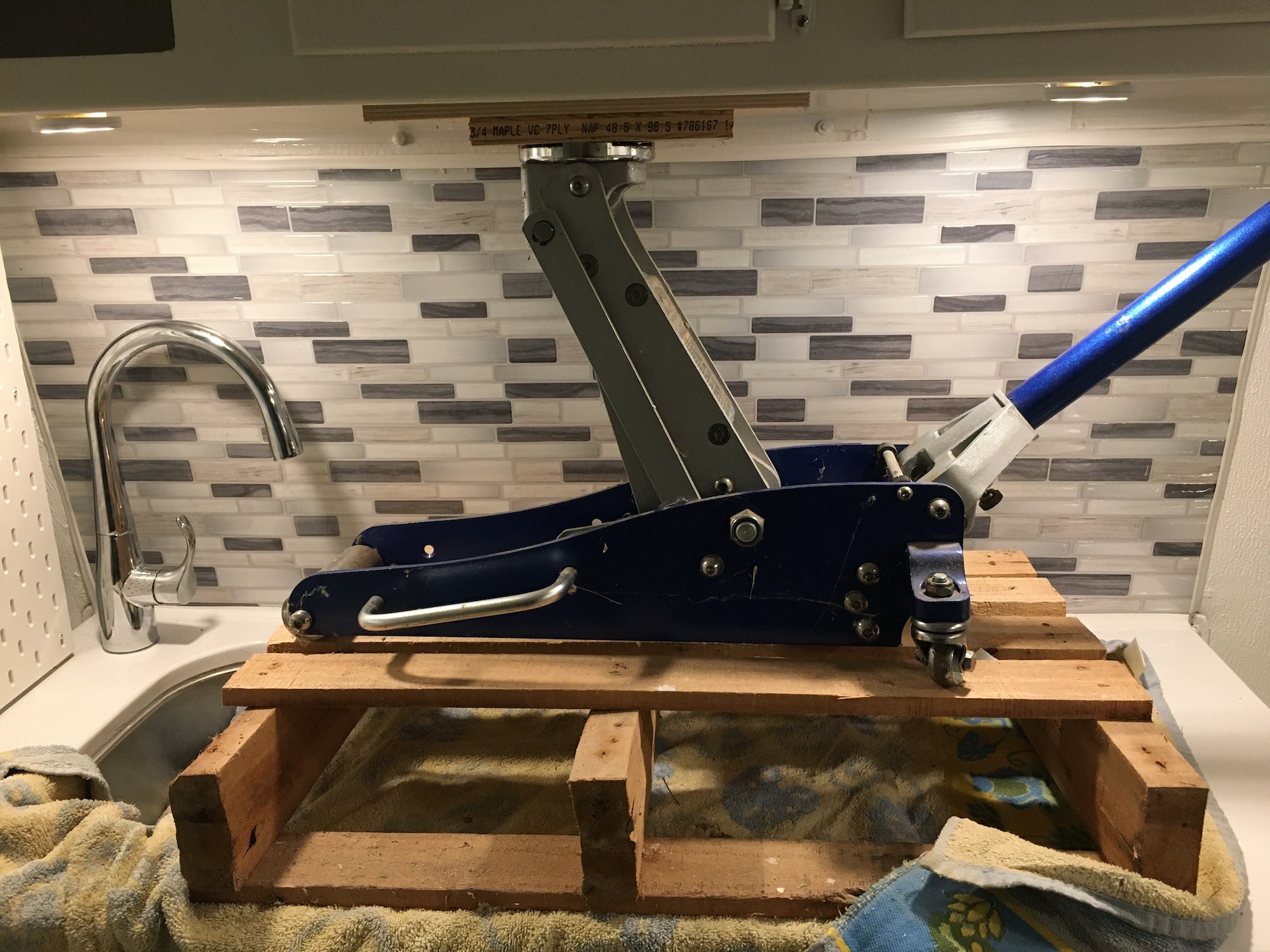


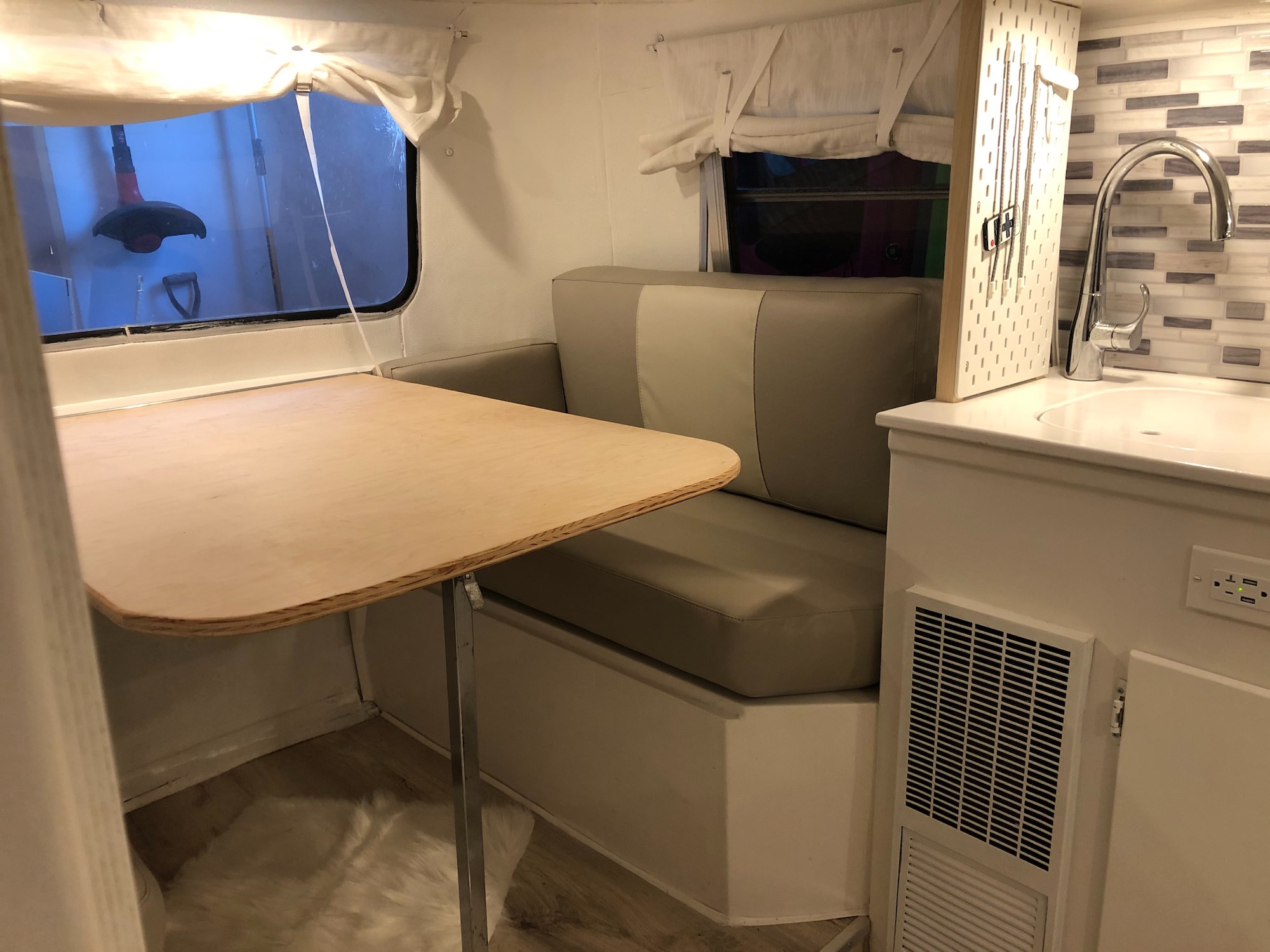
I had the upholstery done in the late in 2019. By early 2020, the basic renovation of the camper was done and it was a pretty nice place to be.
Of course just a few months later, as the weather just started to warm up, Covid hit, so there wasn't a whole lot of camping going on.
I turned my attention to modernizing the electronics and entertainment, and making a "smart camper" out of it. That had mixed results but was a lot of fun.
Why did I do it?#
Well, I thought I wanted a camper, and I liked the scale of the renovation project
What did I learn?#
- I don't like camping all that much.
Where is it?#
- Currently, in my garage.